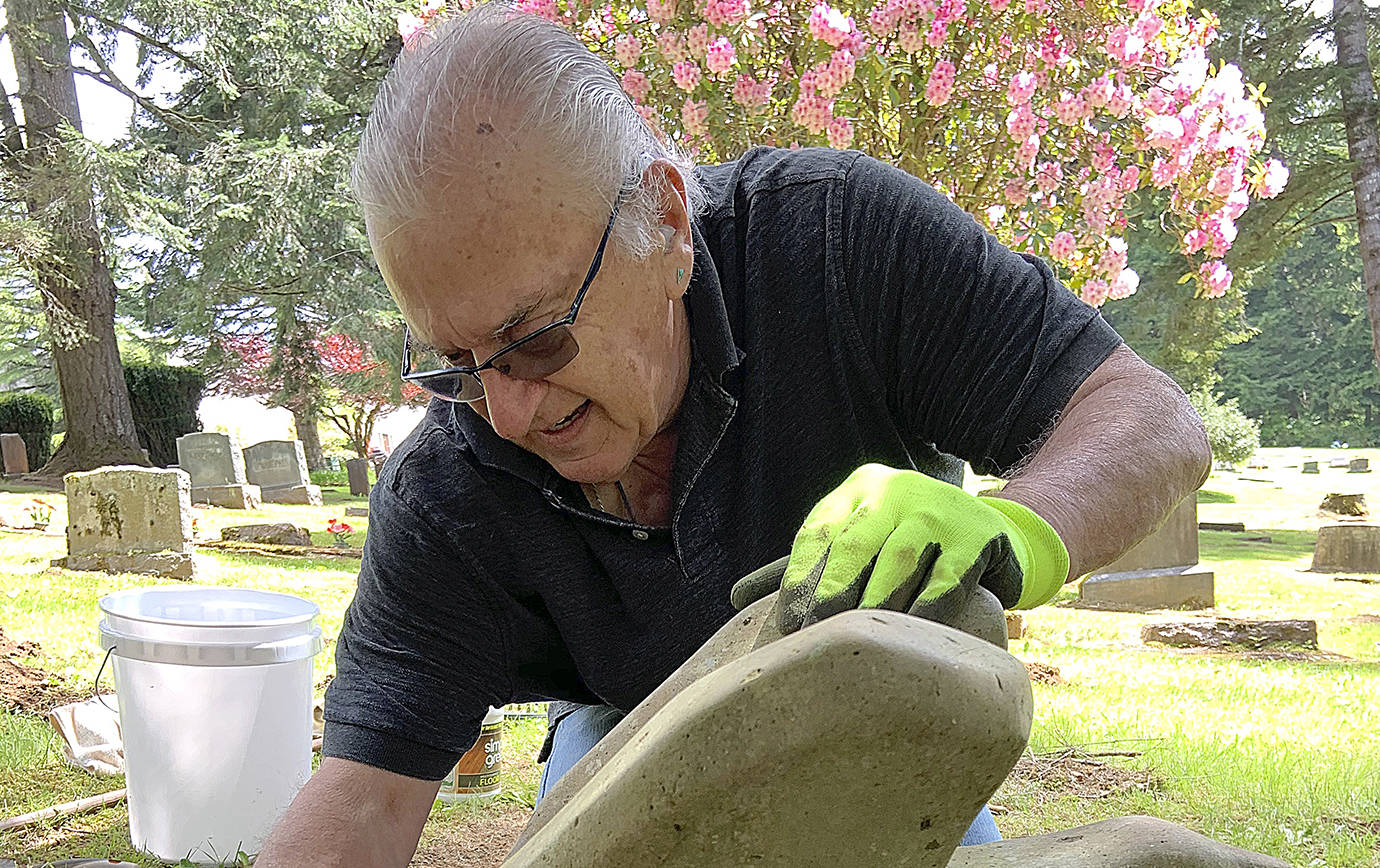Making Tracks
By Kat Bryant
On Monday morning, I made a rare foray into the Outside World to document an act of kindness and respect. It became a humbling learning experience for me.
Dann Sears of the Aberdeen Museum of History contacted me on Sunday. While visiting a relative’s gravesite at Fern Hill Cemetery, he had happened upon the nearby resting place of Lance Wood Hart; and he was excited as I’ve ever heard him.
Members of the local art community know Hart’s name well. Born in Kentucky in 1891, he moved to Aberdeen to live with his uncle, a mill owner, after his father died. With a natural talent for drawing and painting, he studied at the Art Institute of Chicago, then returned to Grays Harbor to paint. He left to serve in the ambulance corps during World War I and then studied further at the Royal Institute of Art in Stockholm before coming back to the Harbor, spending a fair amount of time with his family at their Cohassett Beach cottage. They later moved to Eugene, where he worked as an art professor at the University of Oregon until his death in 1941 at age 50.
Dann was ecstatic over his discovery. “I never knew he was interred here,” he told me Sunday. “He died in Oregon, so I thought he was buried there.”
He said Hart’s monument — a unique stone carving of two seagulls — was covered in decades’ worth of dirt and moss, so he intended to spend Monday clearing the site and scrubbing the stone clean. And he asked if I’d like to join him.
My answer, of course, was yes.
I first learned about Hart a year ago, when I drove to Seattle to interview his daughter Lucy for a Washington Coast Magazine story about a book she had co-edited called “Cohassett Beach Chronicles.” (Her walls are adorned with art by her father and other family and friends — not to mention some of her own colorful works.) We’ve been in occasional contact since then.
So when Dann mentioned Hart’s name, I immediately thought of Lucy. I knew she hadn’t been back to Grays Harbor in ages, so I sent her an email to tell her what Dann was planning. She was very appreciative. We ended up trading several more messages Monday while Dann and I were at Fern Hill, with her answering questions he had about her father and the family members interred next to him.
In the three hours I spent there with Dann on that beautiful spring day, I took photos, helped a little with the scrubbing, and even kept lookout as a large swarm of bees circled the area and finally settled into a nearby tree to rest.
But mostly, I listened as he regaled me with stories about his family history. Born a member of the Seneca tribe, he lived in Ontario, Quebec and Upstate New York in his youth. (My entire family comes from the Niagara Falls area, and I’ve spent a fair amount of time up there; so I was riveted.)
The most jaw-dropping tale (for me) involved Dann’s uncle Ely Parker, a highly intelligent man who earned degrees in law and engineering. But when he tried to volunteer with the Union forces in the Civil War, he was turned down because he was Indian. “They said, ‘We don’t need you fighting for us. This is a white man’s war,’” Dann told me. “They told him to go home to his farm.”
Still, Parker persevered. He had met and befriended Ulysses S. Grant years earlier, so he contacted the general directly. Knowing his character and credentials, Grant commissioned him as a captain, serving as an engineer. Grant later made him his military secretary, with the rank of lieutenant colonel. It was Parker, in fact, who penned the final draft of the Confederate terms of surrender to be signed at Appomattox; and he was present at that ceremony.
By the end of the war, Parker had achieved the rank of brevet brigadier general. And in 1869, after Grant was elected president, he appointed Parker the nation’s first Native American commissioner of Indian Affairs.
(Note: After I got home, I googled Parker to check the spelling of his first name and to confirm that I had recalled certain details correctly from Dann’s story. I was even more blown away by the additional info about him online. You might, too.)
That day at Fern Hill, I also learned that Dann himself is an artist. He told me he’s been spending a lot of his newfound free time working on wood carvings and drawings, the latter of which he’s been scanning into his computer and painting with Photoshop tools. He says he’s still learning the nuances of Photoshop, but he’s creating some beautiful stuff. (Check out his Facebook page to see some of them.)
One final note: Both the historian and the artist in Dann would like to know who hand-carved Lance Wood Hart’s unique grave marker. I must admit I’m curious, too. Lucy’s not certain, but she believes it was someone on the art faculty at the University of Oregon, where he taught. If anyone has this information, please let us know!
Kat Bryant is lifestyle editor of The Daily World and editor of Washington Coast Magazine. Her back isn’t thrilled about going on this little escapade, but her heart is happy. Reach her at kbryant@thedailyworld.com or on Facebook.


